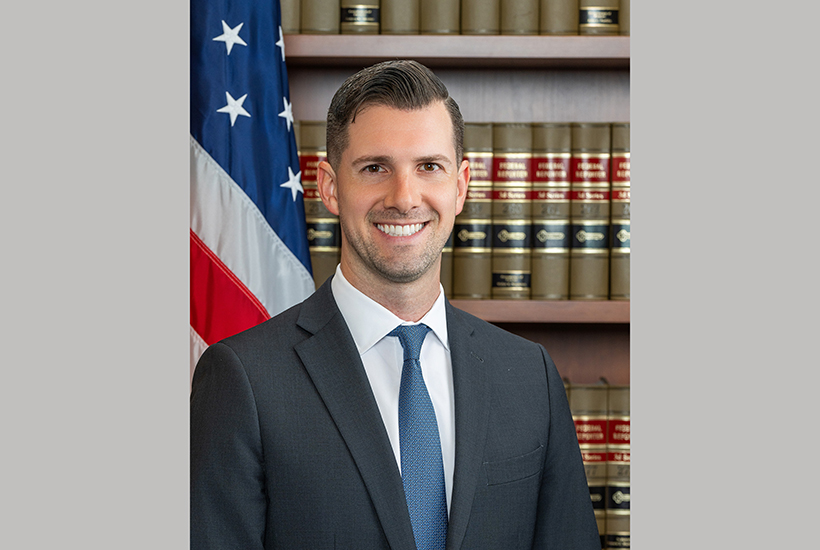The USC Gould School of Law hosted the symposium, “Putting Patients at the Center of Restraints: A Discussion of the Legal and Ethical Implications of Mechanical Restraints in Psychiatric Care.” Presented by the Southern California Review of Law and Social Justice (RLSJ), and the Saks Institute for Metal Health Law, Policy and Ethics, six speakers presented their research and thoughts on the use of mechanical restraints in psychiatric treatment facilities.
“We are very proud of our work with the Saks Institute on both our Issue 21.1 and the symposium,” said Derek Lipkin, managing editor of the journal. “We wanted to give student researchers an opportunity to present their findings, while also offering a discussion on a topic that is relevant and interesting. I have no doubt we achieved this goal, and RLSJ looks forward to another complete issue of Saks Institute research, as well as another symposium, in the coming year.”
Professor Elyn Saks, the Orrin B. Evans Professor of Law, Psychology, and Psychiatry and the Behavioral Sciences, specializes in mental health law. She recently studied the ethical dilemmas that arise during forced treatment of people with mental illness.
“Patients know themselves best,” said Saks. “Putting them at the center of restraints decisions shows dignity and respect.”
Saks shared with audience members that she has a “purely personal interest in the issue.” As a consumer with schizophrenia, she has spent long periods of time being restrained and hopes to spare other patients from experiencing similar trauma.
“I’ve been mechanically restrained three or four times, for up to 20 hours,” Saks said. “It was degrading, dehumanizing and very painful. I’ve had nightmares about it for years.”
Saks’ presentation gave a comprehensive introduction to audience members about the issue. There are three methods of restraints typically used in psychiatrist treatment facilities. With mechanical restraints, a device such as a wrist strap or a straitjacket is used to restrain the patient. When using physical restraints, other individuals physically hold down the patient. Using the isolation method, patients are put into a secluded room empty of items that could be potentially used to cause oneself harm.
She explained that there are three potential times within a patient’s psychiatric care where choices can be made about restraints. At the time of admission, hospital staff can explain the pros and cons of each type of restraint and have a discussion about what can be done in an emergency situation. If an emergency situation occurs, patients can be consulted to see if their original decisions still stand. Finally, after the emergency, patients can discuss how they felt about the method of restraint and strategize about future interventions.
Saks discussed the potential complications of giving patients the right to choose, such as what to do if the patient is incompetent, but ultimately concluded that she believes it is the right thing to do.
“Giving patients the choice makes sense, but what we really need is for further studies to be conducted,” Saks said. “We must study ways to reduce the stress of restraints as well as do a wide scale study of how patients rank the treatment modalities.”
Keris Myrick, the director of Project Return Peer Support Network, is also a consumer with schizophrenia. Like Saks, she has had several traumatic experiences with mechanical restraints.
“The first time I was subdued with mechanical restraints it was a very violent act,” Myrick said. “Several men came towards me and took me down because I didn’t comply with a nurse’s request. They put me in a four-point restraint, where one hand is held up and the other is held down and you’re tied to a bed. I wanted to end my life, then more than ever.”
Myrick showed audience members a recent article from The Los Angeles Times about an incident at Napa State Hospital where a psychiatric nurse was killed by a patient. She criticized the incident’s investigation, saying only staff members were questioned about reducing patient aggression. She believes both patients and their family members should have been involved in the discussion.
Myrick concluded her presentation by saying that she believes patients must be a part of the decision-making process when it comes to using restraints. She believes that by giving patients access to their charts and by encouraging frank discussions between patients and staff about treatment options, psychiatric treatment will be much more effective.
“People should be able to write out their preferences when they are mentally well,” Myrick said. “They should be able to choose what treatments they would like, what hospital they would prefer to be brought to in the case of an emergency, and talk about the alternatives to using restraints.”
Yumi Ahn, a 2011 graduate from the USC Gould School of Law, presented the findings from her paper, “Behavioral Intervention Programs as an Alternative to Mechanical Restraints: Cost-Benefit Analysis and Policy Recommendations.”
Ahn believes that behavioral intervention programs can be used to reduce the use of restraints. She gave examples of several programs nationwide that use verbal feedback and increased communication, as well as reinforcement of positive behavior.
She presented a cost-benefit analysis, contrasting the ethical concerns of using mechanical restraints with the cost of implementing behavioral intervention programs.
“It’s difficult to quantify, but programs can be adopted without incurring much extra cost,” Ahn said. “Simple things like instructing patients in a calm voice don’t incur extra costs. Successful programs could shorten stays and reduce staff turnover rates. In the long term, the cost of training would be beneficial.”
She concluded that the benefits of intervention programs would outweigh the costs.
“Let’s abolish mechanical restraints and go for intervention programs!” she said enthusiastically.
Richard John, PH.D., an associate professor of psychology at USC’s Dornsife College of Letters, Arts and Sciences, presented findings from a paper he co-wrote with graduate student Nicholas Scurich, “Constraints on Restraints: A Signal Detection Analysis of the Use of Mechanical Restraints on Adult Psychiatric Patients.”
“The law is devoid with respect to defining the conditions in which using restraints is permissible,” John said. “It uses the word danger but does not specify the type of danger nor does it delineate an acceptable threshold.”
He explained “Signal Detection Theory,” a way of classifying patients based on their tendencies to become violent. Patients can be classified as true positives, meaning they have a high tendency to become violent, or true negatives, meaning it is very unlikely for them to exhibit violence. Middle ground includes a classification for those who could potentially become violent.
His paper explores the endeavor of creating and applying a universal threshold for using mechanical restraints, in order to make the practice more controlled.
Jacqueline Klein, a 2011 graduate of the USC Gould School of Law, presented the findings from her paper, “A Theory of Punishment: The Use of Mechanical Restraints in Psychiatric Care.”
She began by telling the audience a tragic story about a patient named Jeffrey. Jeffrey asked if he could have a cigarette three minutes before the allowed smoking time. When hospital staff decided he was becoming distressed, he was put into a five-point mechanical restraint and medicated.
“Jeffrey died of a heart attack while tied down on his belly, pumped full of medication,” Klein said. “While researching my paper, I learned some disconcerting facts about how patients have suffered in the name of treatment.”
She hypothesized that restraints are used as a form of punishment, rather than a form of treatment. She asked the audience members to reflect upon whether they thought Jeffrey was being punished for his behavior, or treated to preserve his and others safety.
Klein also explained how staff members could suffer from restraining patients, by having to deal with the emotional toll of their actions.
“Jeffrey’s case is an extreme example, but there are so many other injuries short of death that can occur,” Klein said. “It is hard for me to see the therapeutic benefit of this procedure. It seems like pure punishment rather than therapy.”
Zoe Sussman ‘12 concluded the symposium by presenting the findings from her paper, “Mechanical Restraints: Is This Your Idea of Therapy?”
She researched how both staff and patients feel about using restraints in treatment, and concluded that there is significant need for another method.
“There is no reason restraints should be overused,” Sussman said. “They can cause extreme harm to patients and staff would be happier, less stressed, and more comfortable if they felt they had another method at their disposal.”
Sussman pointed out that reducing the use of restraints would also benefit mental health institutions, because it reduces the potential for death and injury thereby contributing to a more positive reputation.
She concluded with an all-encompassing thought.
“We need to involve the patients in their treatment,” Sussman said. “Individualizing treatment shows respect and develops healthy styles of interaction. When patients feel respect, they are less likely to become violent.”

















